Understanding the Power of ABA in Social Skill Development
Applied Behavior Analysis (ABA) is a scientifically grounded approach that has been effectively used since the 1960s to promote positive social interactions, especially among individuals with autism spectrum disorder (ASD). Rooted in principles of learning and behavior, ABA emphasizes systematic interventions designed to reinforce helpful behaviors, diminish harmful ones, and facilitate meaningful social engagement across various settings. This article explores core ABA techniques and their role in improving social skills, discusses strategies for application, and highlights the benefits of these interventions in fostering social inclusion and independence.
Core Techniques and Methods in ABA for Social Interactions
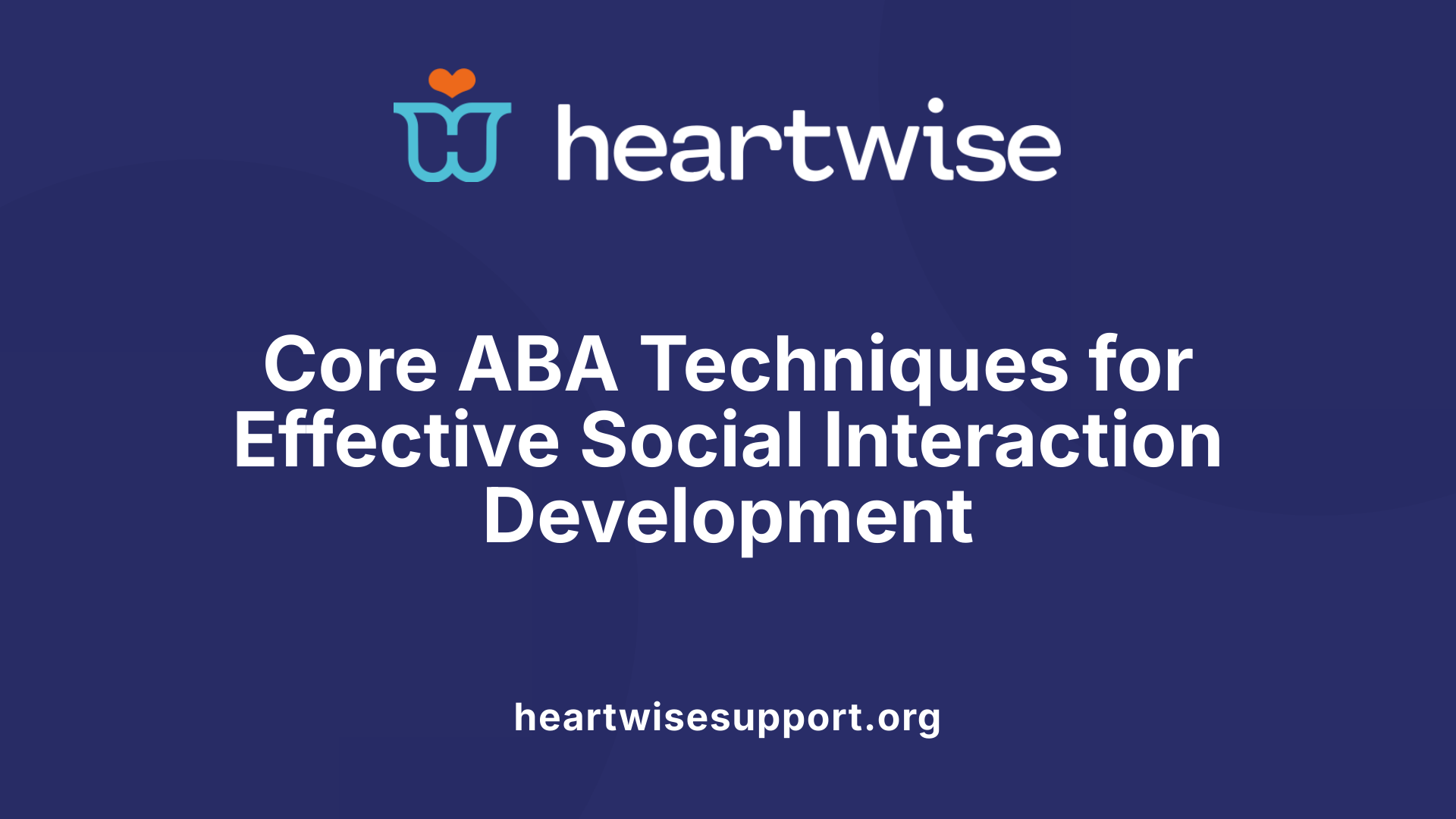
What are the core techniques and methods used in ABA to promote positive social interactions?
Applied Behavior Analysis (ABA) employs a variety of effective strategies to enhance social interaction skills in individuals, especially those with autism. Central among these are reinforcement of desirable behaviors, where positive responses like praise, tokens, or rewards are used to encourage and strengthen social responses.
Modeling social skills through role-playing and demonstrations is another important approach. Therapists create safe environments where individuals can practice social scenarios, helping them learn appropriate responses and build confidence.
Breaking down complex social behaviors into smaller, manageable components is facilitated via task analysis. This method simplifies skills like initiating conversations, making eye contact, or sharing into sequential steps that are easier to learn and master.
Naturalistic teaching methods further support social learning by integrating real-life contexts. Techniques such as Natural Environment Training (NET) and social stories help individuals learn in familiar, everyday settings, making skills more relatable and easier to generalize.
Visual supports, prompts, and individualized assessments are tailored tools that assist with learning and behavior modification. Visual schedules, cues, and personalized plans ensure interventions meet each person’s unique needs.
Strategies like shaping, prompting, and extinction are employed to encourage positive behaviors while decreasing problematic ones. Shaping gradually reinforces closer approximations to desired behaviors; prompting provides guidance during learning; and extinction involves reducing reinforcement for undesired behaviors.
A crucial aspect of ABA is ensuring that learned skills transfer and sustain in the natural environment. Emphasis on generalization guarantees that social skills acquired during therapy are used effectively in everyday situations, leading to improved peer interactions, communication, and social engagement.
Summary Table of Core ABA Techniques for Social Interactions
| Technique | Description | Purpose |
|---|---|---|
| Reinforcement | Using rewards to strengthen behaviors | Encourage social responses and communication |
| Role-playing/Demonstrations | Practicing scenarios in therapy | Build social confidence and simulate real interactions |
| Task Analysis | Breaking skills into smaller steps | Simplify complex social behaviors |
| Naturalistic Teaching | Learning in real-world environments | Promote generalization of social skills |
| Visual Supports & Prompts | Use of visual cues and tailored assessments | Aid understanding and individualized intervention |
| Shaping, Prompting, Extinction | Reinforcing near behaviors, guiding responses, reducing undesired actions | Effectively teach and modify behaviors |
| Generalization Strategies | Applying skills across contexts | Ensure durability and real-world use |
ABA techniques are adaptable and personalized, designed to foster meaningful improvements in social interactions, helping individuals build connections and participate more fully in their communities.
Improving Social Skills in Individuals with Autism Using ABA
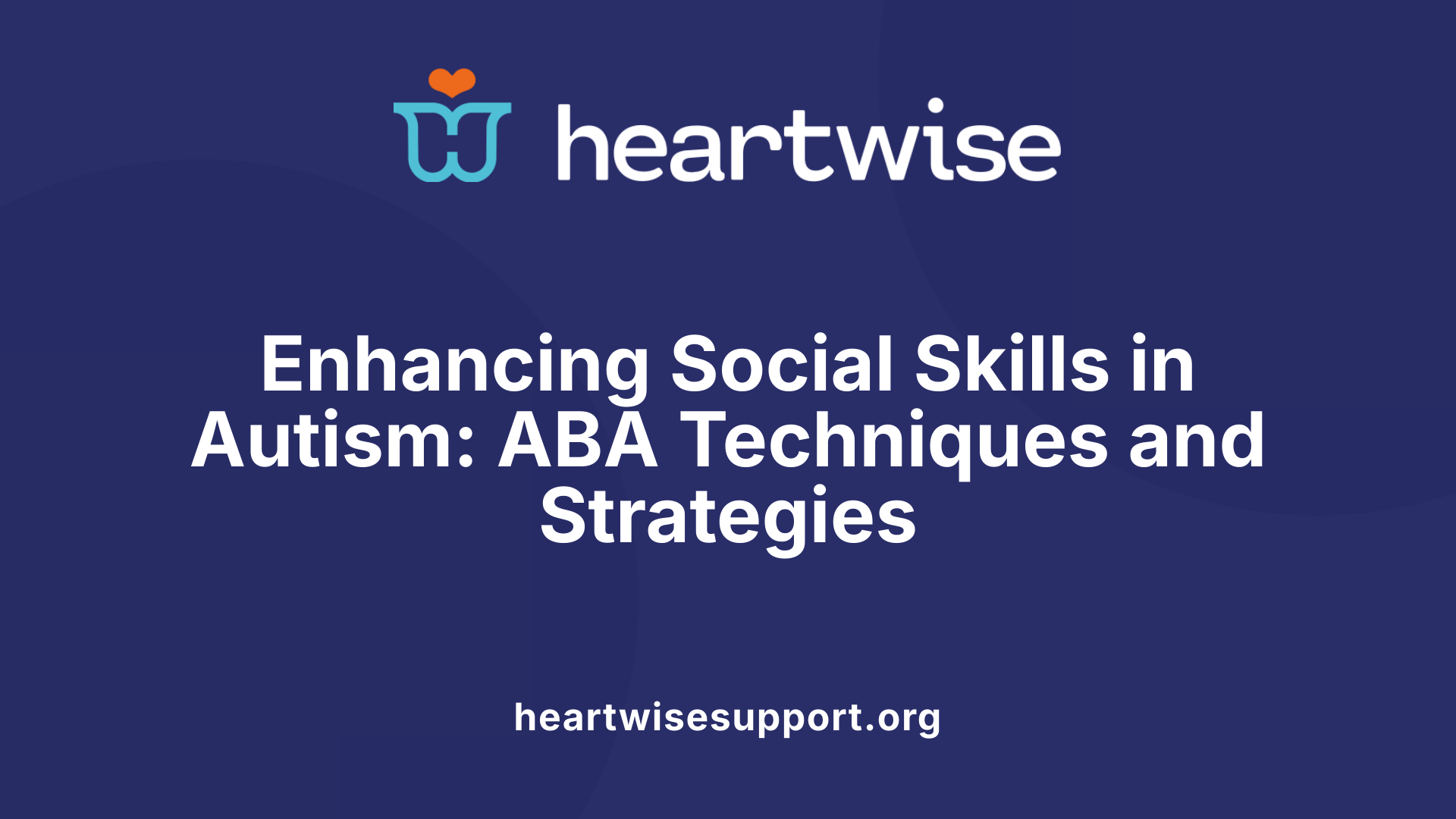
How can ABA strategies improve social skills in individuals with autism?
ABA, or Applied Behavior Analysis, employs a variety of systematic strategies designed to teach and enhance social skills in individuals with autism. These methods focus on specific behaviors such as sharing, making eye contact, taking turns, and effective communication.
One of the core approaches in ABA is breaking down complex skills into smaller, manageable steps. For example, a child might first learn to look at a peer during a shared activity before progressing to initiating a conversation. Therapists use techniques like role-playing, social stories, and video modeling to create real-life opportunities to practice these skills.
Positive reinforcement plays a vital role in encouraging desired behaviors. When a child successfully shares a toy or maintains eye contact, they receive praise, tokens, or other rewards. This reinforcement strengthens the likelihood of the behavior occurring again.
Incorporating visual supports, such as picture cues or schedules, helps children understand what is expected during social interactions. Real-world practice in settings like home, school, or community provides opportunities for generalization, where skills learned in therapy are applied in everyday life.
Involvement of parents and caregivers ensures continuity and consistency outside of therapy sessions. Training family members to use ABA techniques helps reinforce skills and promotes sustained progress.
Moreover, ABA addresses understanding nonverbal cues like body language, facial expressions, and tone of voice, which are crucial for successful social interactions. It also supports emotional regulation and teaches advanced social concepts, including negotiation and problem-solving.
Ultimately, ABA helps children develop confidence and social engagement, making interactions more natural and enjoyable. By systematically targeting behaviors step-by-step, ABA transforms complex social skills into achievable goals, enabling better inclusion and participation in group activities and relationships.
Benefits and Evidence of ABA-Based Interventions for Social Engagement
What are the benefits and effectiveness of ABA-based interventions for encouraging social engagement?
ABA therapy offers proven benefits for individuals with autism, particularly in boosting their social interaction skills. It employs techniques such as positive reinforcement — rewarding desired behaviors to encourage their recurrence — along with modeling and structured teaching strategies. These methods help children and adults learn essential social skills like initiating conversations, responding appropriately, making eye contact, and understanding social cues.
Structured environments, whether in clinics, schools, or home settings, provide a safe space for practicing these skills. Therapists design personalized programs that focus on breaking down complex social behaviors into smaller, manageable steps, making learning more accessible.
One of the strengths of ABA is its focus on generalization — the ability to apply learned skills across different situations and environments. For example, if a child learns to share toys during therapy, ABA aims to help them transfer that skill to playgrounds, classrooms, and family gatherings.
Research consistently supports the efficacy of ABA interventions. Extensive studies have shown that children who receive ABA therapy tend to improve significantly in social communication, peer relationships, and overall social functioning. These improvements often include enhanced language skills, better understanding of social cues, and increased participation in group activities.
The long-term implications of ABA therapy extend beyond immediate skill development. Many individuals experience increased independence, improved self-esteem, and a greater ability to navigate social environments confidently.
How do structured environments help in skill acquisition?
Structured settings are crucial in ABA because they create predictable routines and clear expectations. Visual cues, organized activities, and consistent reinforcement help individuals grasp social concepts more effectively. These environments facilitate the teaching of foundational skills like turn-taking, sharing, and respecting boundaries.
How is progress maintained across various settings?
Generalization is a central goal of ABA. Therapists work on transferring skills learned in therapy to natural settings such as home, school, and community. This is achieved through multiple teaching strategies, including peer-mediated approaches where classmates help reinforce social behaviors.
What does research evidence say about ABA's impact?
Meta-analyses and systematic reviews underscore ABA's effectiveness. Evidence points to substantial gains in social skills, communication, and adaptive behaviors. Studies demonstrate that early intervention with ABA yields considerable benefits, although ongoing therapy can support continued progress across all ages.
What are the long-term benefits?
Long-term, individuals tend to show increased social independence, better peer relationships, and a higher quality of life. Skills learned through ABA can foster meaningful friendships, improve educational outcomes, and support successful community integration.
| Aspect | Details | Additional Notes |
|---|---|---|
| Skill acquisition | Breaking down social skills into small steps | Uses modeling, role-play, and reinforcement |
| Generalization | Applying skills across environments | Includes collaboration with peers and family |
| Evidence base | Supported by research and clinical reports | Demonstrates long-term social improvements |
| Outcomes | Better communication and independence | Enhances overall quality of life |
ABA therapy, with its scientific foundation, continues to be a leading approach for fostering social connection and independence in individuals with autism. Its structured, individualized, and evidence-supported methods make it a valuable tool in promoting meaningful social engagement.
Application of ABA Strategies to Foster Positive Social Behaviors
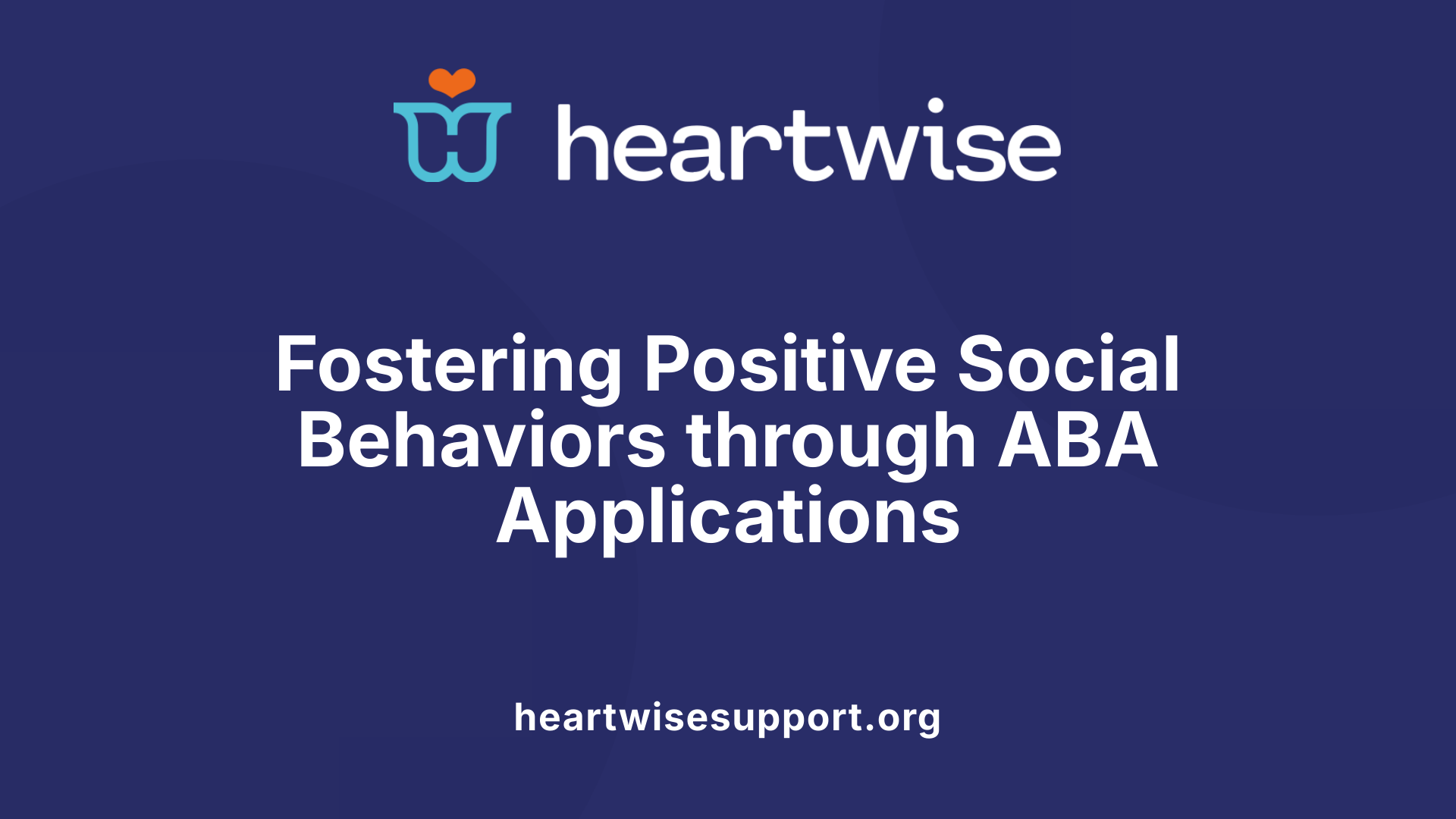
How can ABA strategies be applied to foster positive social behaviors?
Applied Behavior Analysis (ABA) employs a variety of techniques to promote positive social interactions, especially for individuals with autism. These strategies work by encouraging behaviors that improve communication, cooperation, and social engagement.
One fundamental approach is positive reinforcement. When an individual exhibits a desired social behavior, such as sharing a toy or making eye contact, they receive a reward or praise. This strengthens the likelihood of the behavior recurring. Reinforcement can take many forms, including verbal praise, tokens, or preferred activities.
Modeling is another effective tool. Therapists and caregivers demonstrate appropriate social behaviors, such as polite greetings or taking turns. The individual then imitates these actions, practicing social norms in a safe environment.
Prompting supports learning in social situations. Initially, cues like verbal hints, gestures, or physical prompts guide the individual toward correct responses. Over time, prompts are gradually faded to foster independence. For example, a therapist might lightly tap a child's hand to encourage them to shake hands or point out how to introduce themselves.
Extinction is used to reduce problematic or unhelpful social behaviors by withholding reinforcement. If a behavior like tantrum throwing occurs to gain attention, ignoring the behavior reduces its occurrence and encourages more appropriate ways to seek attention.
Behavior chaining and task analysis break down complex skills into smaller, manageable steps. For example, initiating a conversation can be broken into steps such as making eye contact, saying hello, and asking a question. Practicing each step individually makes the overall goal more achievable.
Behavior contracts and redirection are also utilized. Clear expectations are set, and positive behaviors are rewarded. If an individual starts to engage in undesirable behaviors, they may be redirected to more suitable activities or responses.
Overall, ABA’s personalized, science-based methods aim to increase helpful social behaviors, reduce challenges, and support better social integration, communication, and friendship development for individuals with autism.
Strategies to Enhance Communication and Social Interaction Skills in ABA
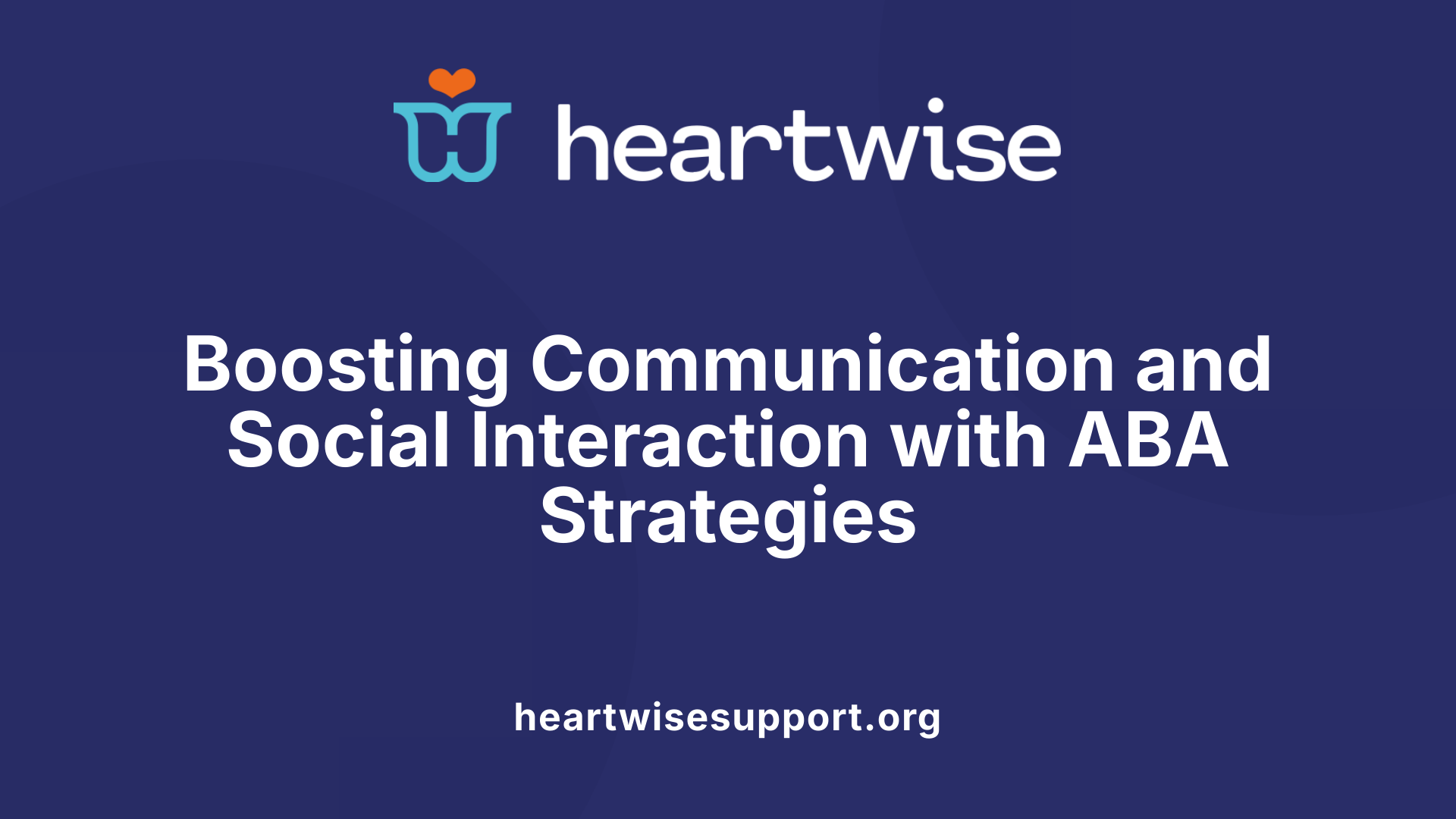
What approaches are used in ABA to enhance communication and social interaction skills?
Applied Behavior Analysis (ABA) utilizes a variety of proven strategies to improve communication and social interaction, especially for children with autism. These approaches are designed to teach specific skills such as making eye contact, understanding social cues, initiating conversations, and engaging in reciprocal interactions.
One of the foundational techniques is Discrete Trial Training (DTT). DTT breaks down complex behaviors into small, manageable steps, providing structured teaching sessions where prompts are given, and positive reinforcement encourages correct responses. This method helps children master individual components like requesting items or responding to greetings.
Natural Environment Teaching (NET) is another vital approach. It involves teaching skills within everyday contexts, such as during play or mealtime, making learning more functional and engaging. This strategy promotes generalization of skills beyond the therapy setting.
Role-playing and social stories are effective tools in teaching social skills. Role-playing allows children to practice social scenarios safely, boosting confidence and response accuracy. Social stories, which are simple descriptive narratives about social situations, prepare children for upcoming experiences by illustrating expected behaviors.
Modeling, including peer and video modeling, demonstrates desired behaviors for children to imitate. Seeing peers successfully perform social tasks or watching videos of appropriate interactions encourages similar behaviors in children.
Reinforcement plays a critical role in motivating children. Verbal praise, tangible rewards like tokens or prizes, and social reinforcement such as clapping help motivate children to practice new skills and ensure that these behaviors are repeated.
ABA programs are highly individualized, focusing on each child's unique needs and current skill levels. Interventions often involve prompting techniques—gestural, verbal, or physical cues—to guide correct responses. Shaping reinforces successive approximations toward a targeted behavior, while chaining links small steps into a sequence to teach complex behaviors.
Setting tailored goals based on thorough assessments ensures progress is measurable and meaningful. Ongoing data collection and collaboration with parents and caregivers support consistent reinforcement and safe practice at home and in community settings.
This combination of strategies—structured teaching, naturalistic instruction, modeling, reinforcement, and personalized planning—creates a comprehensive approach to developing effective communication and social skills in individuals with autism.
Incorporating Personal Interests and Collaboration to Improve Social Skills
How can ABA strategies be applied to foster positive social behaviors?
ABA, or Applied Behavior Analysis, uses a variety of techniques to promote positive social behaviors effectively. Central tactics include positive reinforcement, modeling, prompting, and extinction, all tailored to individual needs.
Positive reinforcement involves rewarding desirable behaviors, such as sharing or greeting peers, with praise, tokens, or preferred activities. This encouragement increases the likelihood of the behavior recurring.
Modeling and social scripts help individuals learn appropriate responses by demonstrating expected interactions. For example, role-playing games and video modeling provide clear examples of social exchanges.
Prompting supports initial learning by guiding individuals through social scenarios, gradually fading support to foster independence. For instance, therapists might gently remind a child to make eye contact or initiate conversation, reinforcing these actions.
Behavior chaining and task analysis deconstruct complex social skills into smaller, manageable steps. This structured approach makes learning less overwhelming and more achievable, teaching skills like turns in conversations or sharing toys.
Behavior contracts and redirection strategies maintain focus on positive behaviors, clearly outlining expectations and reinforcing progress. When challenging behaviors arise, redirection helps guide individuals toward more appropriate responses.
Overall, ABA adopts an individualized and evidence-based framework to enhance social skills, fostering better social integration, communication, and overall behavioral adaptation.
Long-Term Benefits and Goals in ABA for Social Skills
What are the benefits and effectiveness of ABA-based interventions for encouraging social engagement?
ABA therapies have proven to be highly effective for improving social engagement, especially for individuals with autism spectrum disorder (ASD). These interventions use a variety of proven techniques—such as positive reinforcement, modeling, and structured social scenarios—to help individuals develop essential social skills.
In both clinic-based and home-based settings, ABA programs provide a structured environment where learning is tailored to each person's needs. These programs incorporate detailed assessments, allowing therapists to set personalized goals and continually track progress. The strategies focus on teaching communication skills, peer interaction, sharing, turn-taking, and understanding social cues.
Research consistently shows that ABA interventions lead to notable improvements in social communication and relationships. Children and adults involved in ABA often become more independent in social situations, better able to engage with peers, and more adept at navigating the social world. Beyond immediate skill gains, the focus on generalization helps these skills transfer to natural environments, fostering long-lasting social abilities.
Ultimately, ABA therapy helps individuals develop a sense of confidence and competence in social interactions. This not only enhances their current social lives but also sets a foundation for successful relationships, increased independence, and broader social integration over the long term.
How does ABA help develop emotional intelligence and empathy?
A vital part of social skill development in ABA involves teaching emotional understanding and empathy. Through various exercises, such as social stories, role-playing, and emotional recognition tasks, individuals learn to identify their own emotions and interpret others’ feelings. This fosters emotional intelligence, which is crucial for meaningful social interactions.
ABA programs often incorporate activities that help children recognize facial expressions, body language, and tone of voice—all non-verbal cues that convey emotions. By practicing these skills in safe, controlled environments, individuals become more comfortable responding appropriately in real-life situations.
Building empathy is also facilitated through storytelling, perspective-taking exercises, and reinforcing responses that show understanding of others’ emotions. As these skills improve, individuals are better equipped to develop deeper relationships, show compassion, and respond to social cues with sensitivity.
What is the importance of fostering long-lasting social skills?
The ultimate goal of ABA for social skills is to promote skills that stand the test of time. Short-term gains are encouraging, but enduring skills lead to meaningful, lifelong social participation.
By breaking down complex social behaviors into manageable steps—like maintaining eye contact, initiating conversations, sharing, and respecting personal boundaries—individuals can master these in a systematic way. Reinforcement strategies, such as praise or tokens, encourage repeated use of these skills, leading to habit formation.
Successful intervention results in improved self-esteem and confidence. When individuals see their ability to interact successfully, they tend to become more independent and willing to engage in social opportunities.
These long-lasting skills form a foundation for better relationships, higher quality of life, and greater social acceptance. They empower individuals to navigate social environments with greater ease, reducing feelings of isolation and increasing overall well-being.
| Aspect | Benefits | Supporting Techniques |
|---|---|---|
| Self-Esteem | Increased confidence in social settings | Reinforcement, celebration of milestones |
| Independence | Ability to navigate social cues and initiate interactions | Behavior shaping, role-playing |
| Relationships | Better peer and family relationships | Social stories, group activities |
| Emotional Intelligence | Recognizing and responding to own and others' emotions | Emotion recognition tasks, empathy exercises |
| Long-Term Social Skills | Lifelong ability to engage meaningfully | Skill breakdown, reinforcement, generalization |
Integrating ABA into Everyday Environments for Lasting Impact
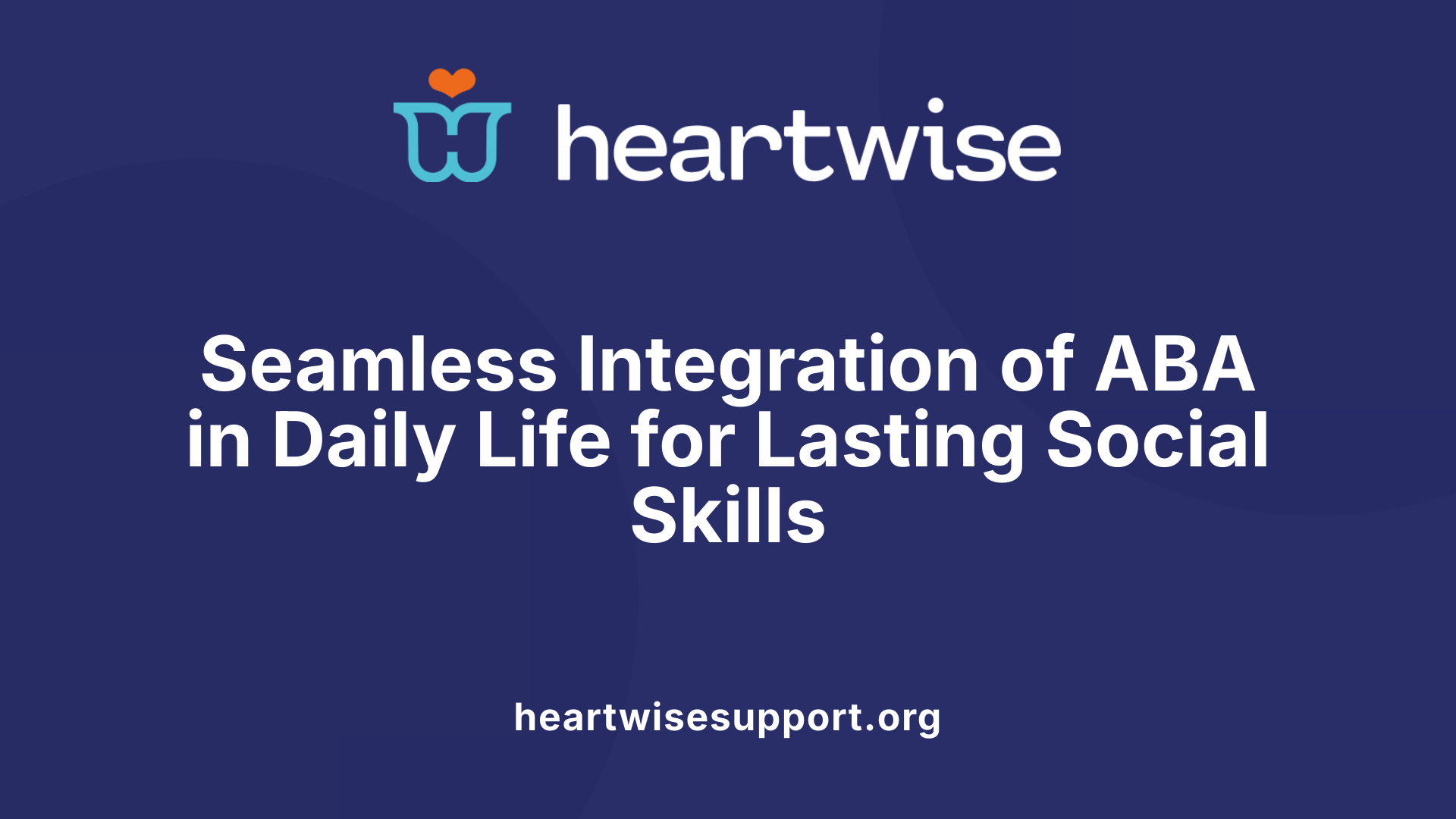
How is ABA used in community and everyday settings?
Applied Behavior Analysis (ABA) can be effectively integrated into community-based environments such as parks, grocery stores, and social events. Using visual schedules helps individuals anticipate what will happen next, reducing anxiety and promoting cooperation. Teachers and therapists might use social stories or video modeling in these settings to demonstrate appropriate social behaviors and communication cues.
Community-based ABA interventions often involve real-world practice, providing opportunities for individuals to generalize skills learned in therapy to everyday life. This approach ensures that positive behaviors are not limited to clinical environments but become part of routine interactions.
Supporting the transfer and maintenance of skills over time
One of the main goals of ABA is to promote the durability of learned skills. To do this, therapists and families focus on strategies that support generalization—the ability to apply skills across various settings and people—and maintenance, which sustains those skills over time.
Techniques include varied practice in different environments, using multiple trainers or peers, and gradually reducing prompts. For example, a child might learn to initiate conversations with peers in a therapy room and then practice the same skill at a playground or during community outings.
Reinforcements used in therapy are often adapted to be meaningful in different contexts, ensuring the individual finds social rewards and tangible incentives motivating regardless of the setting.
Involving families and caregivers in everyday ABA strategies
Families and caregivers are essential partners in reinforcing skills outside formal therapy. Training parents and caregivers to understand ABA principles empowers them to implement strategies consistently at home.
This can include establishing visual routines, encouraging social interactions during daily activities, and providing positive reinforcement for appropriate behaviors. Cooperative planning among therapists and families ensures that interventions are aligned and effective across different settings.
Regular communication, data sharing, and progress updates help maintain focus on ongoing skill development, making the intervention seamless and sustainable.
Techniques used to promote social skills through ABA
ABA employs diverse techniques to enhance social interaction, including role-playing, modeling, and social stories tailored to individual needs. Role-playing allows children to practice interactions in a safe, controlled setting, improving responses to social cues.
Video modeling demonstrates desired behaviors and can be accessed repeatedly, enhancing understanding and retention. Social stories help children learn about social norms, emotional understanding, and perspective-taking.
In group settings, structured activities like turn-taking games and shared play environments teach collaboration, sharing, and respectful communication. Reinforcement—such as praise or tokens—encourages the repetition of these positive behaviors.
Using technology and structured social activities
Technology tools, like communication apps and video modeling, support social skills practice in engaging ways. These resources can simulate social interactions, providing additional practice for children who may find real-world socializing challenging.
Structured social activities, including organized games and routines, foster comfort and confidence. These settings help children learn to interpret body language, facial expressions, and tone, which are crucial non-verbal cues.
How can ABA techniques improve social and communication skills?
ABA focuses on breaking down complex social skills into smaller, teachable components, such as eye contact, initiating conversations, and understanding personal boundaries. Each skill is taught with clear objectives, practice opportunities, and reinforcement to encourage mastery.
Through gradual exposure and reinforcement, children develop the confidence to engage more spontaneously and effectively. Strengthening social initiation and response skills supports broader social integration and friendships.
The importance of caregiver involvement
Parents and caregivers play a vital role in the ongoing success of ABA interventions. They are trained to recognize behavioral cues, implement reinforcement strategies, and create supportive environments.
By practicing together and reinforcing goals consistently, caregivers help embed social skills into daily routines, promoting generalization and long-term success.
This collaborative effort ensures that ABA’s benefits extend beyond therapy sessions into meaningful, everyday social interactions—leading to improved relationships, self-esteem, and independence for individuals with autism.
Harnessing ABA for Social Growth and Inclusion
In summary, Applied Behavior Analysis offers a comprehensive, evidence-based framework for fostering positive social interactions among individuals with autism. By utilizing techniques such as reinforcement, modeling, task analysis, and naturalistic teaching, ABA can effectively teach, reinforce, and generalize social skills. The individualized nature of ABA programs ensures that interventions address each person's unique needs, promoting meaningful social engagement, emotional understanding, and long-term independence. Collaboration among therapists, families, and educators further enhances outcomes, confirming ABA's vital role in supporting social growth and inclusive communities. As research continues to validate its efficacy, ABA remains a cornerstone of interventions aimed at helping individuals navigate social landscapes with confidence and competence.
References
- Applied Behavior Analysis (ABA) | Autism Speaks
- Peer Play: Facilitating Positive Social Interactions for Autism
- ABA Therapy: Key Strategies for Improving Social Skills
- Boosting Social Skills and Communication Through ABA Therapy
- How ABA Therapy Enhances Social Skills in Children with ASD
- ABA Therapy and Its Impact on Social Skills Development
- Practice Effective ABA Therapy Techniques | All Star ABA
- Applied Behavior Analysis (ABA) | Autism Speaks
- ABA Techniques: Strategies for Behavior Analysts - GSEP Blog
- How ABA Interventions Promote Positive Behavior











